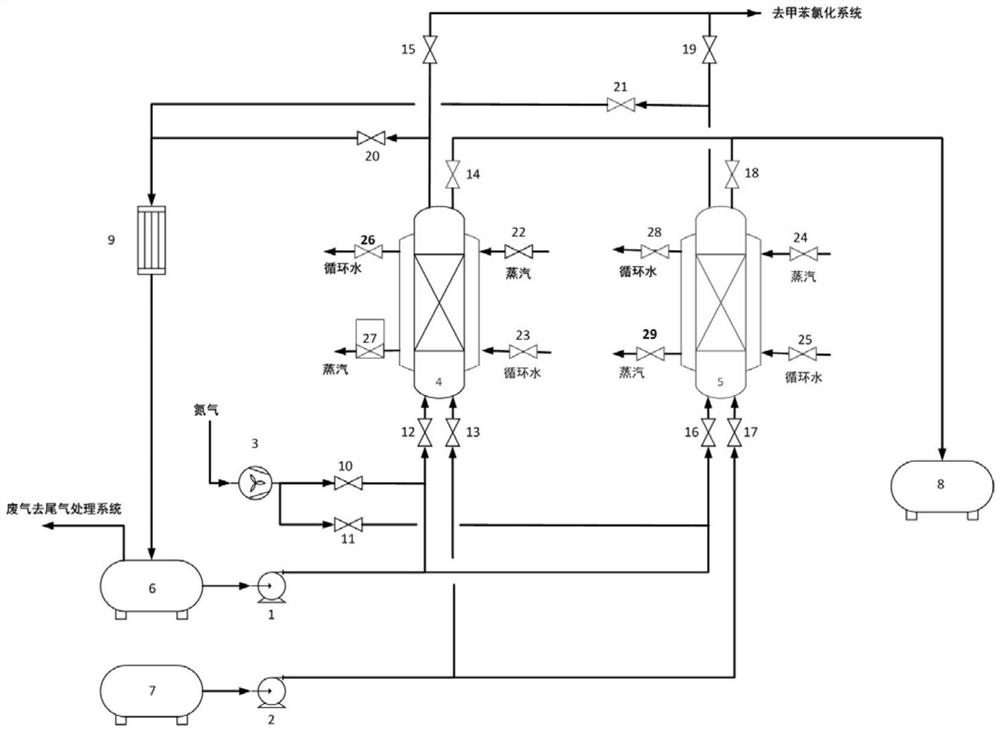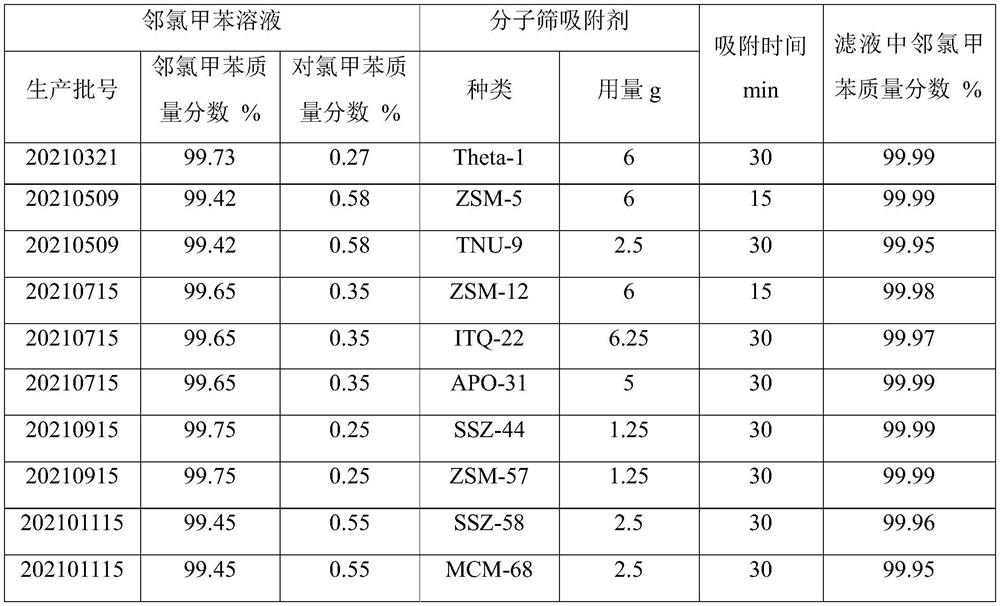Method for continuously producing high-purity o-chlorotoluene by adsorption separation method
A high-purity o-chlorotoluene technology, applied in the field of continuous production of high-purity o-chlorotoluene by adsorption separation, can solve the problems of inability to obtain high-purity o-chlorotoluene, avoid recovery steps, reduce processing costs, and simplify the process. line effect
- Summary
- Abstract
- Description
- Claims
- Application Information
AI Technical Summary
Problems solved by technology
Method used
Image
Examples
Embodiment 1
[0031] Take 50 g of o-chlorotoluene solutions of different production batches, add different types of molecular sieve adsorbents, stir at room temperature for a certain period of time, filter, analyze the mass fraction of o-chlorotoluene in the filtrate, and compare the adsorption effects of different adsorbents. The results are shown in Table 1. Show. It shows that the above molecular sieve adsorbents can selectively adsorb p-chlorotoluene in the o-chlorotoluene solution to obtain o-chlorotoluene with a mass fraction of ≥99.95%.
[0032] Table 1. Adsorption effects of different molecular sieve adsorbents
[0033]
Embodiment 2
[0035] like figure 1As shown, a system for continuous production of high-purity o-chlorotoluene by an adsorption separation method includes a first tubular adsorption tower 4 and a second tubular adsorption tower 5 connected in parallel, an o-chlorotoluene raw material storage tank 7, an adjacent Chlorotoluene product tank 8, toluene storage tank 6, condenser 9; the pipe-side inlets of the first row of tubular adsorption towers 4 are respectively connected with the o-chlorotoluene raw material storage tank 7 through the first ortho-chlorotoluene feed pipeline, and are connected through the first ortho-chlorotoluene feed pipeline respectively. A desorbent feed line is connected to the toluene storage tank 6, the first desorber feed line is connected to the blower 3 for feeding nitrogen into the tube path of the first tubular adsorption tower 4, the first The tube-side outlets of a row of tubular adsorption towers 4 are respectively connected to the o-chlorotoluene product tank ...
PUM
 Login to View More
Login to View More Abstract
Description
Claims
Application Information
 Login to View More
Login to View More - R&D
- Intellectual Property
- Life Sciences
- Materials
- Tech Scout
- Unparalleled Data Quality
- Higher Quality Content
- 60% Fewer Hallucinations
Browse by: Latest US Patents, China's latest patents, Technical Efficacy Thesaurus, Application Domain, Technology Topic, Popular Technical Reports.
© 2025 PatSnap. All rights reserved.Legal|Privacy policy|Modern Slavery Act Transparency Statement|Sitemap|About US| Contact US: help@patsnap.com


